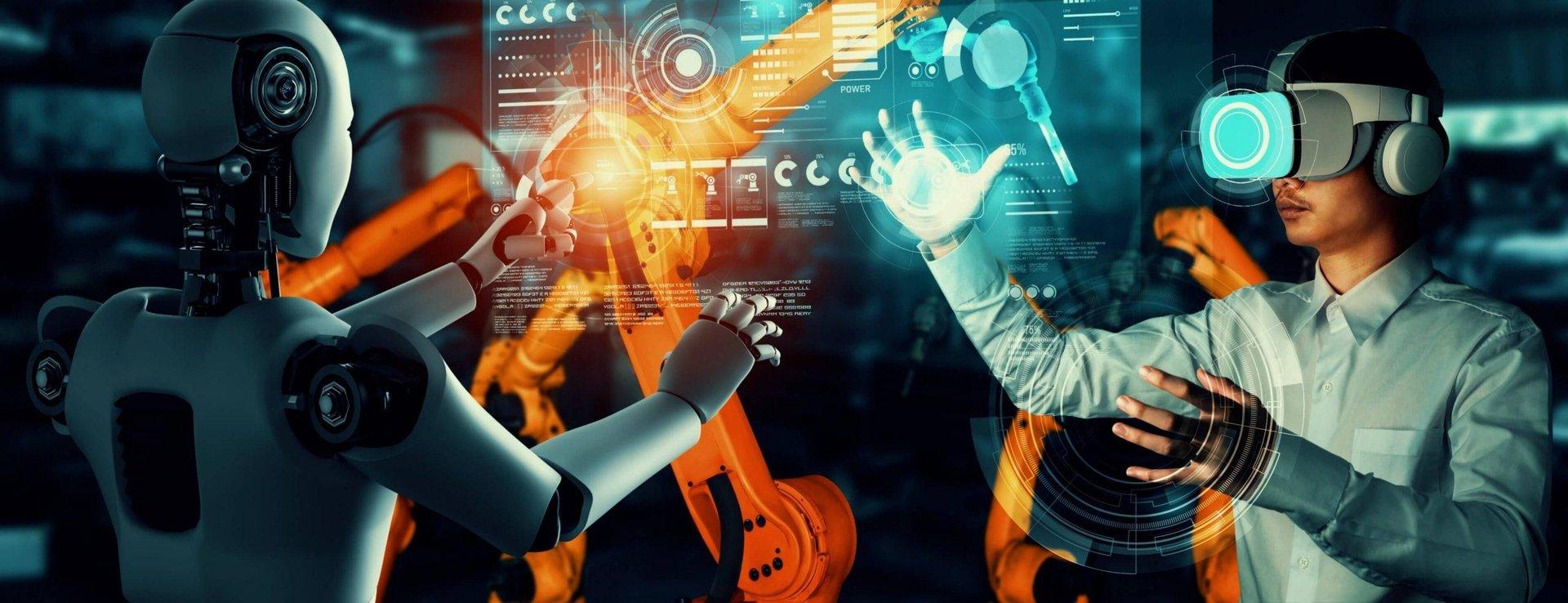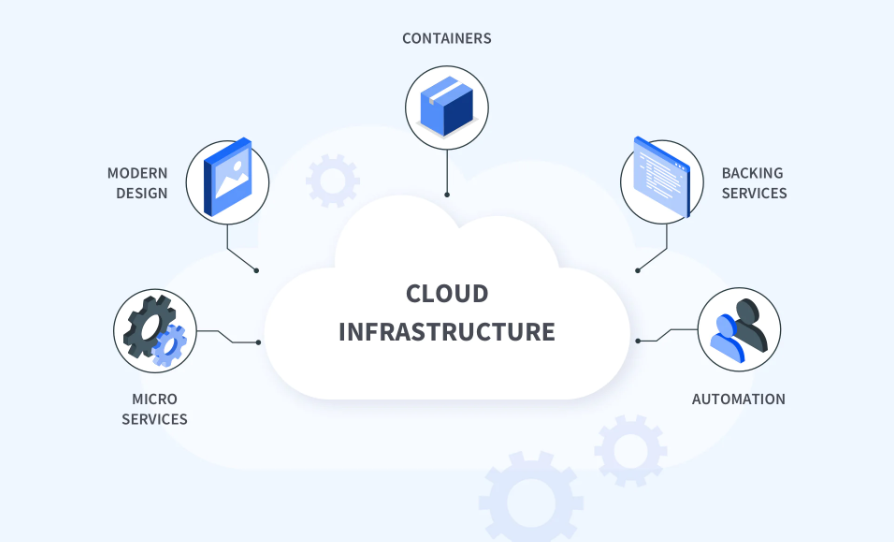The Future of Software Development
In an era defined by rapid technological advancement and digital transformation, the landscape of software development is constantly evolving.
The Future of Software Development: Trends and Innovations
In an era defined by rapid technological advancement and digital transformation, the landscape of software development is constantly evolving. As businesses seek to stay ahead of the curve and meet the ever-changing needs of customers, it's essential to stay abreast of the latest trends and innovations shaping the future of software development. From emerging technologies to new methodologies, the future of software development promises to be both exciting and trans-formative.

1. Artificial Intelligence and Machine Learning:
Artificial intelligence (AI) and machine learning (ML) are poised to revolutionize the way software is developed, deployed, and utilized. From predictive analytics to natural language processing (NLP) and computer vision, AI-powered technologies are enabling software to become smarter, more adaptive, and more capable of understanding and responding to user needs. As AI and ML continue to advance, we can expect to see greater automation, Personalization, and intelligence embedded into software applications across industries.

2. Low-Code/No-Code Development Platforms:
The rise of low-code/no-code development platforms is democratizing software development and empowering individuals with limited technical expertise to create powerful applications with minimal coding. These platforms offer visual interfaces, drag-and-drop functionality, and pre-built components that streamline the development process and reduce the barrier to entry for aspiring developers. With low-code/no-code platforms, organizations can accelerate time-to-market, foster innovation, and address the growing demand for custom software .

3. Cloud-Native Architecture:
Cloud-native architecture is reshaping the way software applications are designed, built, and deployed in the cloud. By leveraging microservices, containers, and serverless computing, cloud-native applications are more scalable, resilient, and cost-effective than traditional monolithic architectures. Cloud-native development enables organizations to embrace agility, flexibility, and innovation, allowing them to rapidly iterate, scale, and adapt to changing business requirements and market conditions. As cloud adoption continues to rise, we can expect cloud-native architecture to become the de facto standard for modern software development.
4. Edge Computing:
Edge computing is revolutionizing the way software applications are deployed and managed by bringing computation and data storage closer to the point of use. By processing data locally at the edge of the network, edge computing reduces latency, bandwidth usage, and reliance on centralized data centers, making it ideal for latency-sensitive and bandwidth-intensive applications. Edge computing enables real-time analytics, faster decision-making, and enhanced user experiences, particularly in industries such as IoT, autonomous vehicles, and augmented reality/virtual reality (AR/VR).
5. DevOps and Continuous Delivery:
DevOps and continuous delivery practices are becoming increasingly essential for organizations looking to streamline the software development lifecycle and accelerate time-to-market. By integrating development, operations, and quality assurance teams and automating key processes, DevOps enables organizations to deliver software faster, more reliably, and with higher quality. Continuous delivery practices such as continuous integration (CI) and continuous deployment (CD) allow for rapid and frequent releases, enabling organizations to respond quickly to customer feedback, market changes, and emerging opportunities.
6. Quantum Computing:
While still in its nascent stages, quantum computing holds the potential to revolutionize software development by enabling exponential leaps in computational power and solving complex problems that are currently intractable for classical computers. Quantum computing has the potential to revolutionize industries such as cryptography, materials science, drug discovery, and optimization, opening up new frontiers of innovation and discovery.
7. Cybersecurity and Privacy:
As software becomes increasingly pervasive and interconnected, cybersecurity and privacy are becoming paramount concerns for organizations and users alike. With the proliferation of cyber threats and data breaches, there is a growing emphasis on building security and privacy into software applications from the ground up. From secure coding practices to encryption, authentication, and access control mechanisms, cybersecurity and privacy will continue to be critical considerations in the future of software development.
8. Internet of Things (IoT) Integration:
The Internet of Things (IoT) is revolutionizing software development by enabling the connection and communication of devices, sensors, and systems over the internet. With the proliferation of IoT devices across industries such as healthcare, manufacturing, smart cities, and agriculture, software developers are tasked with creating robust, scalable, and secure IoT solutions. The future of software development will see increased focus on IoT integration, enabling organizations to harness the power of connected devices to collect, analyze, and act on real-time data for improved decision-making, efficiency, and innovation.
9. Augmented Reality (AR) and Virtual Reality (VR) Applications:
Augmented reality (AR) and virtual reality (VR) technologies are reshaping the way we interact with digital content and experiences, offering immersive and interactive experiences that blur the lines between the physical and digital worlds. Software developers are leveraging AR and VR technologies to create compelling applications for gaming, entertainment, education, training, and beyond. As AR and VR adoption continues to grow, software development will increasingly focus on creating innovative and engaging experiences that leverage these transformative technologies to enhance productivity, creativity, and entertainment.
10. Blockchain and Decentralized Applications (DApps):
Blockchain technology is disrupting traditional software development paradigms by enabling the creation of decentralized applications (DApps) that operate on distributed networks without the need for intermediaries. DApps leverage blockchain's immutable ledger and smart contract functionality to enable secure, transparent, and tamper-proof transactions and interactions. Software developers are exploring blockchain-based solutions for various use cases, including supply chain management, identity verification, financial services, and voting systems. The future of software development will see increased adoption of blockchain and DApps, driving innovation, transparency, and trust in digital ecosystems.
11. Quantum-Safe Cryptography:
As quantum computing continues to advance, the threat it poses to traditional cryptographic algorithms and systems grows more significant. Quantum computers have the potential to break current cryptographic schemes, rendering sensitive data vulnerable to exploitation. In response, software developers are exploring quantum-safe cryptography techniques that can withstand attacks from quantum computers. Quantum-safe algorithms, such as lattice-based cryptography and hash-based signatures, are being researched and developed to ensure the security and privacy of data in a post-quantum computing era. The integration of quantum-safe cryptography into software applications will become increasingly important to protect sensitive information from emerging threats.
12. Sustainable Software Development Practices:
With growing concerns about environmental sustainability and climate change, there is a rising emphasis on incorporating sustainable practices into software development processes. Sustainable software development focuses on minimizing the environmental impact of software applications by optimizing resource usage, reducing energy consumption, and minimizing carbon emissions. Software developers are adopting eco-friendly coding practices, such as optimizing algorithms, reducing computational overhead, and leveraging renewable energy sources for data centers. The future of software development will see a shift towards more sustainable and environmentally conscious practices, driving innovation and responsibility in the digital age.
Conclusion:
As we look to the future of software development, it is clear that the landscape is undergoing a profound transformation driven by emerging technologies, evolving methodologies, and shifting priorities. From artificial intelligence and IoT integration to blockchain and quantum-safe cryptography, the possibilities for innovation are vast and exciting. By embracing these trends and innovations, software developers can unlock new opportunities, address complex challenges, and shape a future where technology empowers and enriches lives across the globe. As we embark on this journey of discovery and innovation, the future of software development promises to be one of boundless potential and endless possibilities.
No comments yet. Login to start a new discussion Start a new discussion